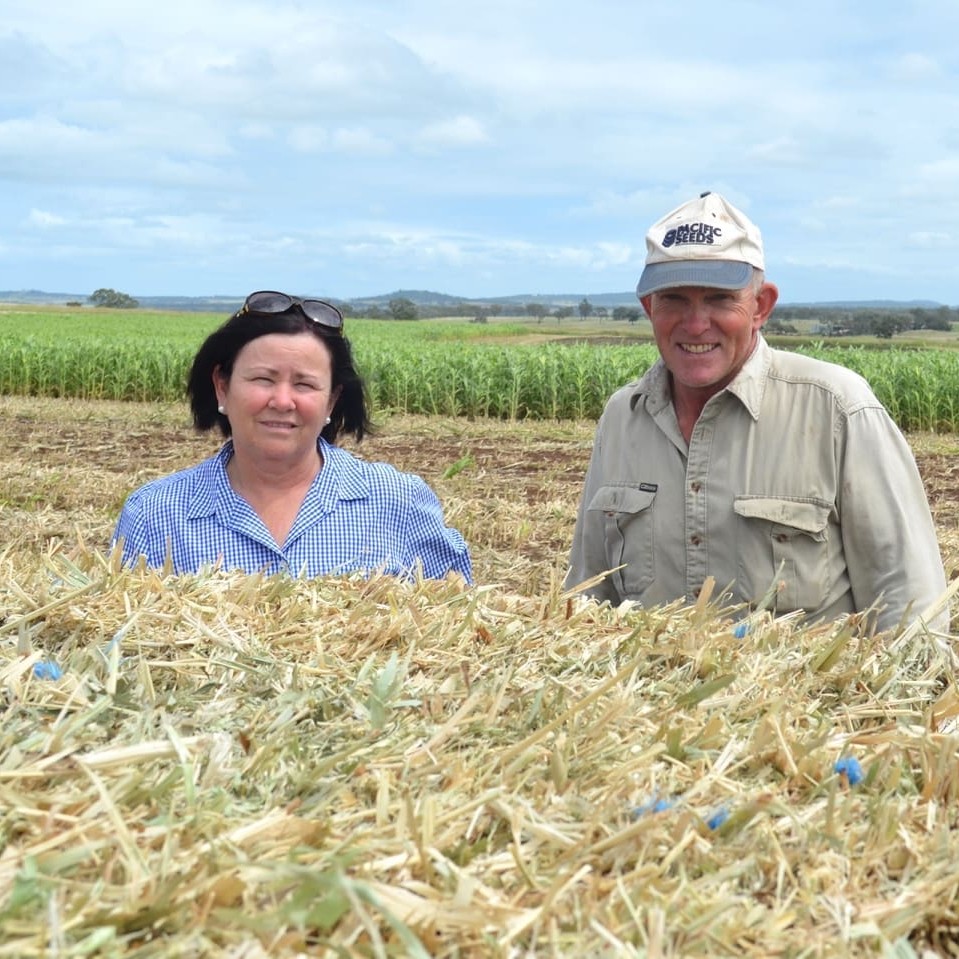 Livestock owners and managers in Queensland and northern New South Wales are being urged to test any stressed summer forage for toxic substances such as nitrates and prussic acid which are exacerbated by drought and heat and can kill livestock.
Livestock owners and managers in Queensland and northern New South Wales are being urged to test any stressed summer forage for toxic substances such as nitrates and prussic acid which are exacerbated by drought and heat and can kill livestock.
Although uncommon in normal years, these poisonings occur when cattle eat forages stressed from severe environmental conditions such as the current drought being experienced, seed company, Pacific Seeds warned in a statement.
“The stress disrupts normal plant growth and may cause the plants to accumulate high levels of toxins in the form of nitrate or prussic acid. But knowing the causes, symptoms and treatments for these diseases can help producers prevent losses,” Pacific Seeds forage business manager, Maree Crawford, said.
She said plants need nitrogen for growth and development, however, when drought prevents them from converting the nitrogen they absorb into new growth, nitrate levels may rise.
Nitrates did not accumulate when there is normal rainfall or irrigation. Under those conditions, nitrogen is absorbed by roots and moved into the plant is rapidly transformed into plant proteins.
According to Ms Crawford, plants in the sorghum family — including both forage and grain sorghum and wild species including Johnsons Grass and Columbia Grass – can accumulate high levels of nitrates.
“Although the growing conditions causing them are similar, the diseases differ greatly, and sampling and testing can indicate when forages pose a danger to livestock,” she said.
The major difference between the two poisons was that prussic acid generally dissipates from plants if material is properly processed as hay, whereas nitrate levels remain constant in hay. However, in hay baled prematurely at high moisture levels, the prussic acid may not have had a chance to dissipate.
“Have hay tested before feeding if you suspect that it is high in nitrate,” Ms Crawford suggested. “If hay is high in nitrate, feed carefully with an energy supplement or in combination with low protein forages, or other hay low in nitrates.”
“Ensile forages high in nitrate. When forage is properly fermented, nitrate levels can be reduced significantly.”
Ms Crawford said nitrate poisoning acted on the oxygen-carrying capacity of blood in animals.
When forages have a high concentration of nitrate, the animal cannot complete the conversion and nitrite accumulates. Nitrite is absorbed into the bloodstream directly through the rumen wall and converts hemoglobin (the oxygen carrying molecule) in the blood to methemoglobin, which cannot carry oxygen. An animal dying from nitrate (nitrite) poisoning actually dies from asphyxiation, or a lack of oxygen.
“Most vets advise that, in general, all ruminants can safely eat forages that contain up to 1 percent nitrates on a dry weight basis. Monogastrics (horses and pigs) are less sensitive to nitrate intoxication,” Ms Crawford said.
Nitrate poisoning usually did not occur rapidly, but over time, depending on how high the nitrate level is in the forage.
Acute nitrate toxicity symptoms generally include death, blue mucous membranes (lack of oxygen), fast-breathing, high pulse rate, weakness, uneasiness, excessive salivation, frequent urination and dilated and bloodshot eyes.
She said animals treated with methylene blue may recover, but by the time an animal went down, it was often too late to treat.
Ms Crawford said producers could take steps to help prevent nitrate poisoning, and should refer to their local vets or DPI for information.
Prussic acid threat
The second threat, prussic acid poisoning, is one of the most toxic and rapidly acting poisons.
“Cyogenic compounds can develop in plants that are stressed and in the rumen the compounds are converted to cyanide, which can kill livestock,” Ms Crawford said.
Prussic acid can accumulate and fluctuate in the plant; it may be present for a short time and then dissipate. Severe drought stress can also cause prussic acid to form. High concentrations of prussic acid may be associated with rapid cell division or rapid growth, such as shortly after a rain or irrigation on previously drought-stressed paddocks.
A reading in excess of 600ppm is considered unsafe and 1000 ppm is lethal.
Ms Crawford said hungry livestock were at highest risk, and could show symptoms within five minutes of eating plants with a high level of HCN (hydrogen cyanide), and may die within 15 minutes.
Salivation and laboured breathing occur first, followed by muscular tremors, uncoordinated movements, bloating, convulsions and death from respiratory failure.
To prevent prussic acid poisoning, Ms Crawford suggested talking with a local consultant for the best advice.
“When it comes to testing forages, the plants can be tested for both nitrate and prussic acid either as standing forage or stubble, and as hay,” she said.
Initial testing can be carried out by the farmer using a diphenylamine test for nitrates and the picrate paper test for prussic acid presence, however to obtain definitive results they should send plant samples to a registered animal feed testing laboratory such as SGS or local DPI.
Source: Pacific Seeds
